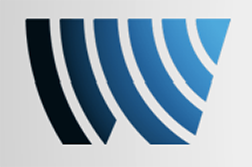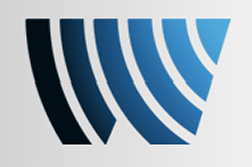WWO: Amazon Prime Day Powered by Audio
This week’s blog from Cumulus Media | Westwood One’s Audio Active Group looks at the recent Amazon Prime Day (July 8-11) and audio’s role in marketing the annual sale event. Data by Quantilope reveals a number of takeaways, including: 1) Leading all media in Amazon Prime Day 2025 purchases were AM/FM radio listeners (53%), followed by ad-supported music streaming (47%) and podcast (44%) consumers. Ad-supported audio listeners were more likely to shop Amazon Prime Day than the online video audience, social media users, and linear TV viewers. Ad-supported audio listeners are more likely to be Amazon Prime members, spend more, and were more aware of Amazon Prime Day 2025; 2) Ad-supported audio (AM/FM radio, music streaming, and podcasts) are ideal media platforms for retailers and e-commerce brands: Heavy audio listeners are more likely to shop online. Heavy AM/FM radio and podcast listeners spend more online than TV viewers; 3) AM/FM radio makes your TV better – “20 gets you 50”: A 20% shift of a TV media budget to AM/FM radio generates a +50% increase in campaign reach. Nielsen Media Impact campaign optimizations reveal shifting media weight to AM/FM radio generates significantly more reach, especially among younger 18-49 demographics. AM/FM radio does an extraordinary job in increasing campaign reach among light TV viewers who will not see retailer TV ads; and 4) Audio holiday AM/FM radio campaigns work: Consumers exposed to an Amazon holiday AM/FM radio campaign have higher brand equity (awareness, ad recall, prior purchase, and purchase intent). Nielsen sales effect studies reveal AM/FM radio campaigns for retailers generate significant return on advertising spend: $15 dollars of incremental sales for every dollar of AM/FM radio advertising. See the full bog post here.
media users, and linear TV viewers. Ad-supported audio listeners are more likely to be Amazon Prime members, spend more, and were more aware of Amazon Prime Day 2025; 2) Ad-supported audio (AM/FM radio, music streaming, and podcasts) are ideal media platforms for retailers and e-commerce brands: Heavy audio listeners are more likely to shop online. Heavy AM/FM radio and podcast listeners spend more online than TV viewers; 3) AM/FM radio makes your TV better – “20 gets you 50”: A 20% shift of a TV media budget to AM/FM radio generates a +50% increase in campaign reach. Nielsen Media Impact campaign optimizations reveal shifting media weight to AM/FM radio generates significantly more reach, especially among younger 18-49 demographics. AM/FM radio does an extraordinary job in increasing campaign reach among light TV viewers who will not see retailer TV ads; and 4) Audio holiday AM/FM radio campaigns work: Consumers exposed to an Amazon holiday AM/FM radio campaign have higher brand equity (awareness, ad recall, prior purchase, and purchase intent). Nielsen sales effect studies reveal AM/FM radio campaigns for retailers generate significant return on advertising spend: $15 dollars of incremental sales for every dollar of AM/FM radio advertising. See the full bog post here.



 to connect with their favorite hosts and shows on social media. Half of weekly podcasts consumers follow their favorite podcast hosts on one of the social platforms; 2) Younger 18-34 podcast consumers are more likely to follow their favorite hosts on social media. Compared to 35-49 and 50+ podcast consumers, 18-45 podcast consumers are more engaged socially with podcast hosts. 68% of podcast consumers 18-34 follow their favorite hosts on social media. 55% of 35-49s follow favorite hosts on social. 40% of those 50+ follow favorite podcast hosts on social; and 3) YouTube towers as a podcast discovery platform: 19% of weekly podcast consumers use YouTube to find podcasts. When asked which social platform they’ve used to find podcasts, 19% of podcast consumers are turning to YouTube, more than all other social media platforms combined.
to connect with their favorite hosts and shows on social media. Half of weekly podcasts consumers follow their favorite podcast hosts on one of the social platforms; 2) Younger 18-34 podcast consumers are more likely to follow their favorite hosts on social media. Compared to 35-49 and 50+ podcast consumers, 18-45 podcast consumers are more engaged socially with podcast hosts. 68% of podcast consumers 18-34 follow their favorite hosts on social media. 55% of 35-49s follow favorite hosts on social. 40% of those 50+ follow favorite podcast hosts on social; and 3) YouTube towers as a podcast discovery platform: 19% of weekly podcast consumers use YouTube to find podcasts. When asked which social platform they’ve used to find podcasts, 19% of podcast consumers are turning to YouTube, more than all other social media platforms combined.  more ads that communicate dry features/benefits. Additionally, research indicates that converting existing demand and creating future demand require different creative/copy approaches and different media strategies. Converting existing demand is most efficiently achieved by tightly targeting those “in the market” with rational messaging of product and price information that persuades them to choose the advertiser’s product over others. Creating future demand is most efficiently achieved by targeting very broad audiences of “all category buyers” with emotional messaging that is designed to stand out and be enjoyed by consumers, creating positive memories of the brand that will influence future purchase decisions. Finally, podcast consumers are invested in the success of their favorite shows. Half of weekly podcasts consumers said they wouldn’t mind a couple of extra ads per show so their favorite podcasts could continue.
more ads that communicate dry features/benefits. Additionally, research indicates that converting existing demand and creating future demand require different creative/copy approaches and different media strategies. Converting existing demand is most efficiently achieved by tightly targeting those “in the market” with rational messaging of product and price information that persuades them to choose the advertiser’s product over others. Creating future demand is most efficiently achieved by targeting very broad audiences of “all category buyers” with emotional messaging that is designed to stand out and be enjoyed by consumers, creating positive memories of the brand that will influence future purchase decisions. Finally, podcast consumers are invested in the success of their favorite shows. Half of weekly podcasts consumers said they wouldn’t mind a couple of extra ads per show so their favorite podcasts could continue.